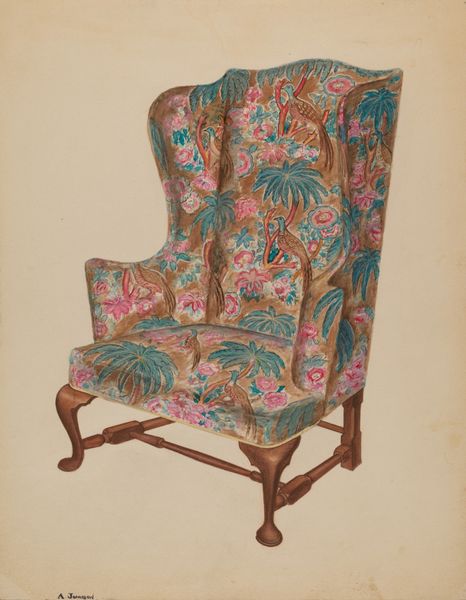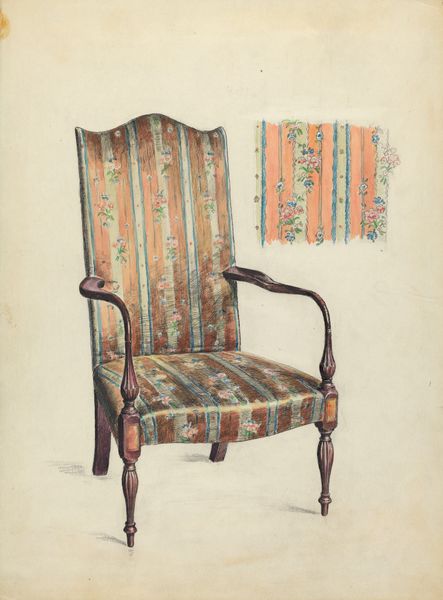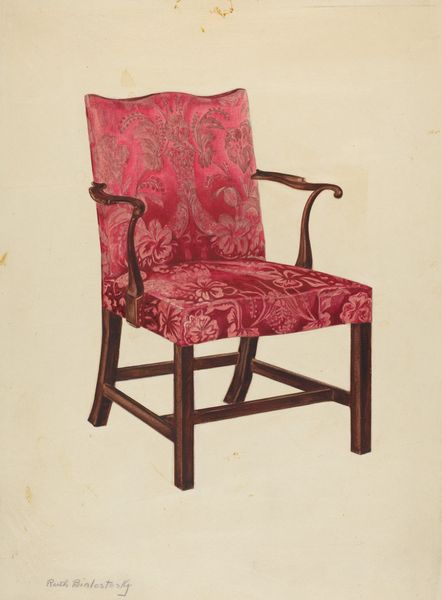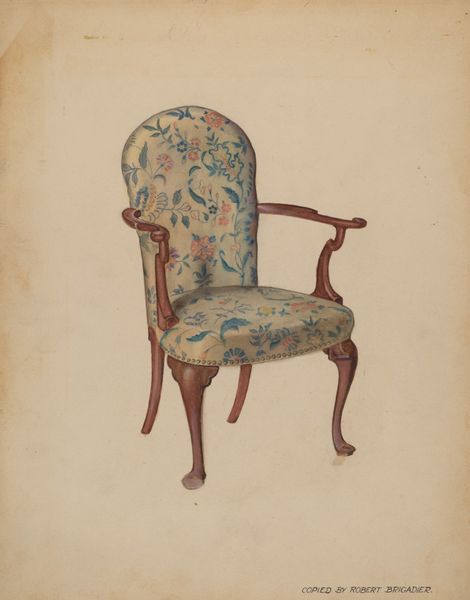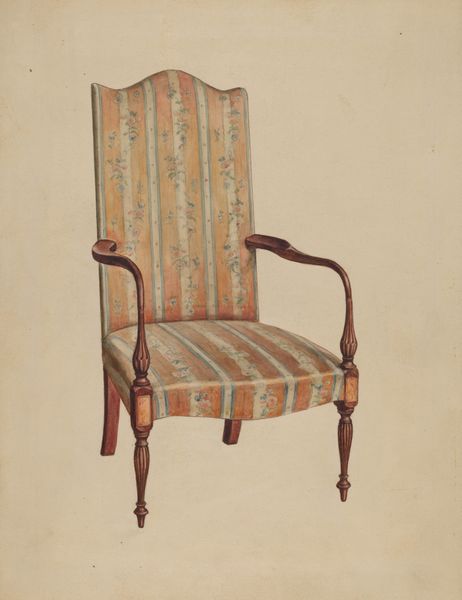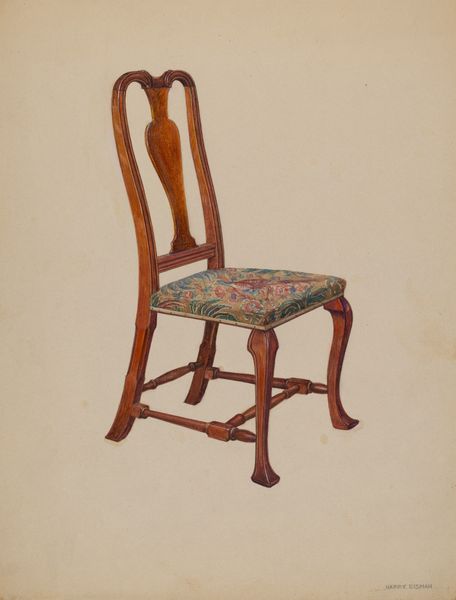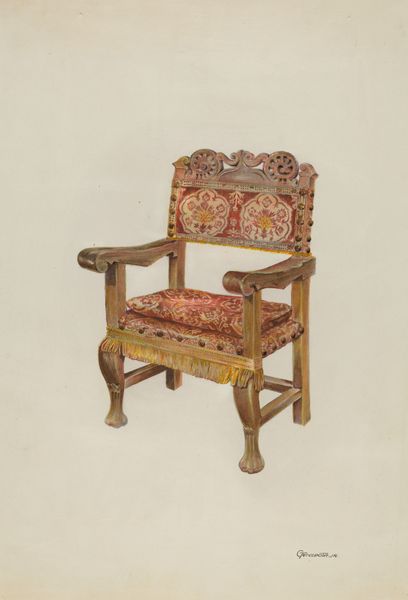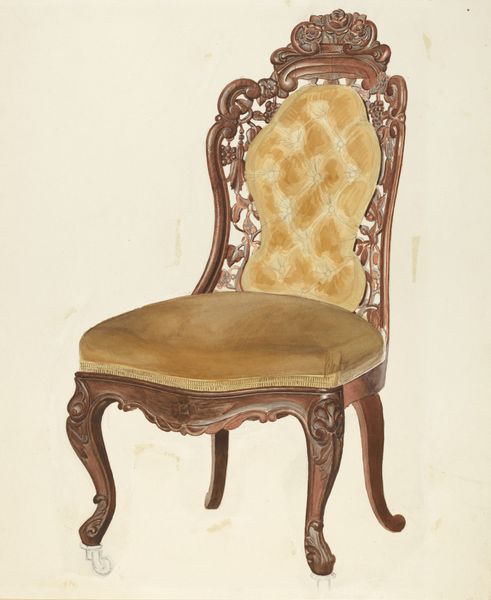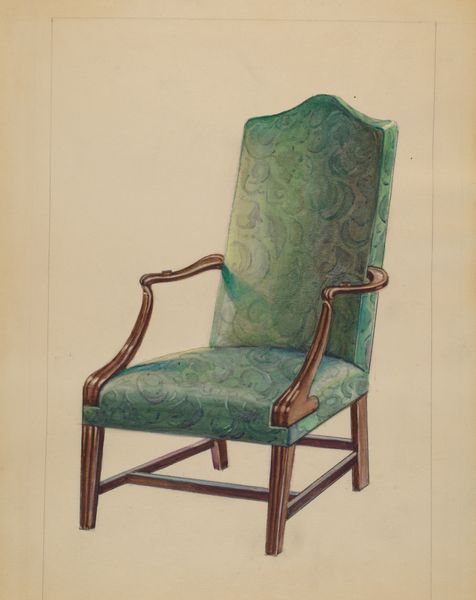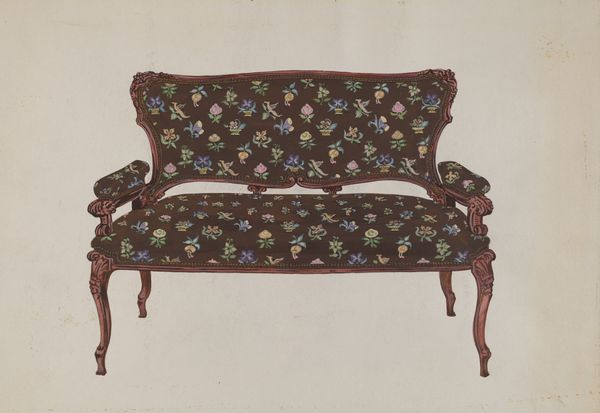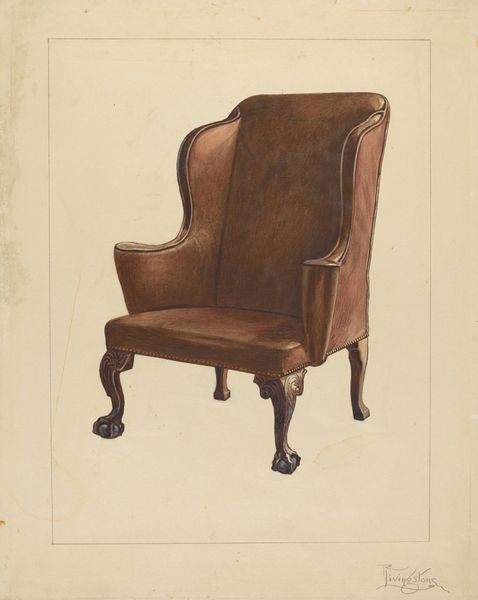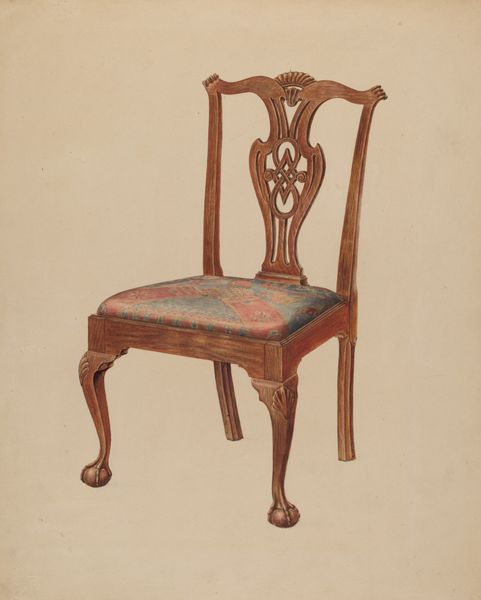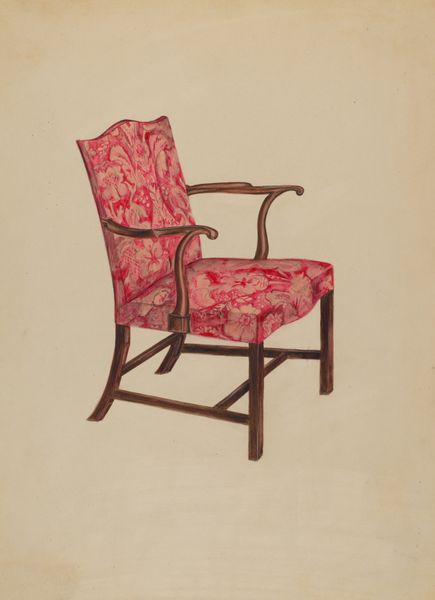
drawing, painting, watercolor
#
drawing
#
water colours
#
painting
#
watercolor
#
geometric
#
academic-art
#
decorative-art
#
watercolor
Dimensions: overall: 49.3 x 38.5 cm (19 7/16 x 15 3/16 in.) Original IAD Object: none given
Copyright: National Gallery of Art: CC0 1.0
Curator: This watercolor by Rolland Livingstone from 1941 is titled "Wing Chair". There's something both familiar and very proper about it. Editor: My immediate thought is the sheer amount of visual information packed into this one chair. The floral print, the details on the wood legs... it's all rather overwhelming. Curator: I see the density you mention, and yet to me the chair evokes the feeling of a sanctuary, a place for introspection and quiet refuge. It reminds me of old photographs of my grandmother's parlor, evoking specific memories and sensory impressions through its design and form. It reminds us that home design choices are never neutral; they’re always laden with values and histories. Editor: Absolutely. Wing chairs have always represented a certain class privilege, but here, I'm drawn to how the chintz pattern perhaps democratizes it a bit? The bold color palette pushes against tradition. Red and blue were symbolically charged during WWII. Is this perhaps a symbol of solidarity or even defiance? Curator: I think the domestic setting allows the symbol of the Wing Chair to shift away from its connotations of authority into something more intimate. Here it represents a cozy protection against wartime anxieties; the icon of the chair offers security and continuity amidst external chaos. Editor: It also underscores the role of domesticity as a space for political maneuvering and resistance. How might a woman sitting in that chair in 1941 have experienced or challenged prevailing norms and structures through this interior space? The chair could then stand as an object loaded with quiet subversion. Curator: A fascinating idea – a potent combination of image and interpretation, revealing new layers each time. Editor: Indeed. Every angle offers something new to unpack, as this domestic object takes on additional political and historical weight, making us consider these kinds of objects as far more than decorative.
Comments
No comments
Be the first to comment and join the conversation on the ultimate creative platform.
